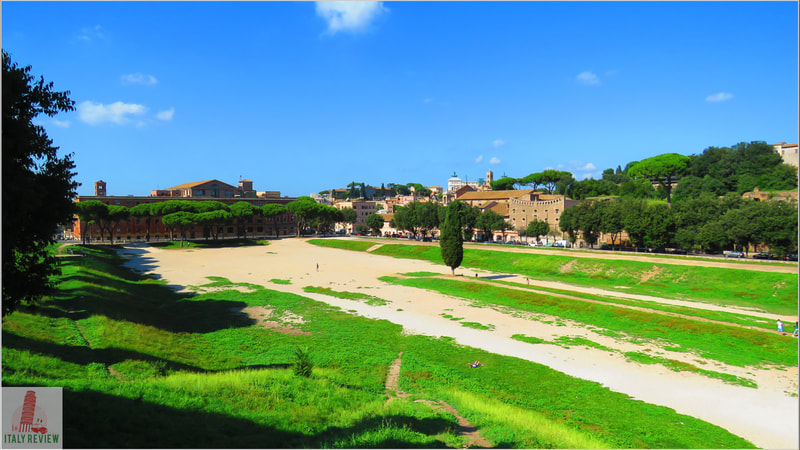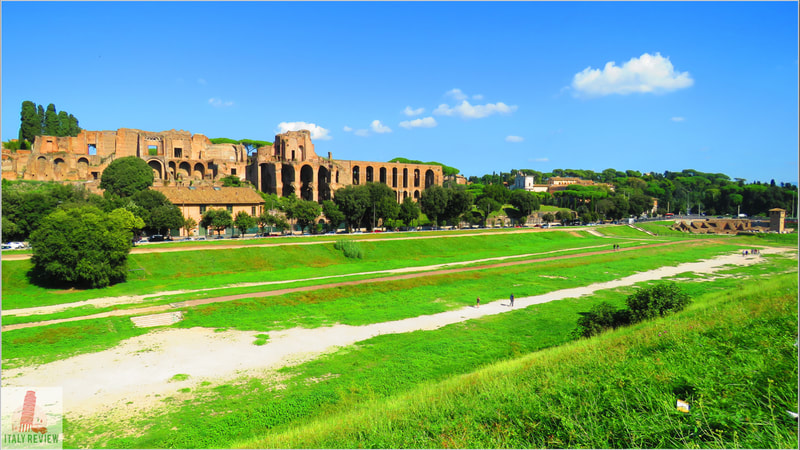Circus Maximus
|
By Dion Protani
|
Latest update: 23 January 2024
|
|
The Circus Maximus is an ancient Roman hippodrome that was used for chariot races and originally built around the sixth century BC. Measuring 621 metres in length, it could house as many as 150,000 spectators at its zenith.
Although nowadays there's very little of the stadium still intact, it is used for concerts and other major events in the city centre. |
Related links
Profile
The Circus Maximus, or Circo Massimo in Italian, is an ancient chariot racing stadium located in Rome, Italy. It is one of the most significant and largest ancient Roman public entertainment venues, reflecting the grandeur and cultural importance of the Roman Empire.
History
The Circus Maximus dates back to the early Roman Republic and was initially used for various public events, including chariot races, religious ceremonies, and other forms of entertainment.
The original structure was likely a simple wooden track, but it was expanded and rebuilt several times over the centuries. During its peak, the Circus Maximus could accommodate up to 150,000 spectators, making it one of the largest venues of its kind in the ancient world.
The original structure was likely a simple wooden track, but it was expanded and rebuilt several times over the centuries. During its peak, the Circus Maximus could accommodate up to 150,000 spectators, making it one of the largest venues of its kind in the ancient world.
Key features and nearby attractions
- Archaeological Site: The Circus Maximus is an open-air archaeological site, and much of the original structure is no longer standing. However, the layout of the stadium is still visible, and visitors can explore the remains of the ancient racetrack and seating areas.
- Views: The site offers panoramic views of the Palatine Hill and the surrounding area, providing a sense of the ancient landscape of Rome.
- Information Boards: Information boards are placed around the site, providing historical context and details about the functions of the Circus Maximus during ancient times.
- Accessibility: The Circus Maximus is centrally located in Rome, and it is easily accessible on foot or by public transportation. It is a short distance from other major attractions such as the Roman Forum and the Colosseum.
- Free Admission: Entry to the Circus Maximus is free, making it a popular spot for tourists and locals alike.
- Events: The site occasionally hosts events, concerts, and cultural performances, adding to the atmosphere and recreating the public gatherings that once took place here.
- Guided Tours: Guided tours are available for those who wish to learn more about the history and significance of the Circus Maximus and its place in ancient Roman society.
- Nearby Attractions: The Circus Maximus is within walking distance of many other famous landmarks, including the Roman Forum, the Palatine Hill, and the Capitoline Hill.
Circo Massimo
|
City: Rome
Province: Metropolitan City of Rome Region: Lazio Built: 6th century BC Nearest Metro stop: Circo Massimo - Line B - 50 m - 1 minute walk Fly to: Rome Fiumicino Airport - 26 minutes by car (28 km) Close by: Roman Forum, Colosseum, Trastevere, Il Vittoriano Recommended accommodation: Hotel Artemide |
UNESCO World Heritage Site
Historic Centre of Rome, the Properties of the Holy See in the City Enjoying Extraterritorial Rights and San Paolo Fuori le Mura
Year: 1980
Historic Centre of Rome, the Properties of the Holy See in the City Enjoying Extraterritorial Rights and San Paolo Fuori le Mura
Year: 1980























